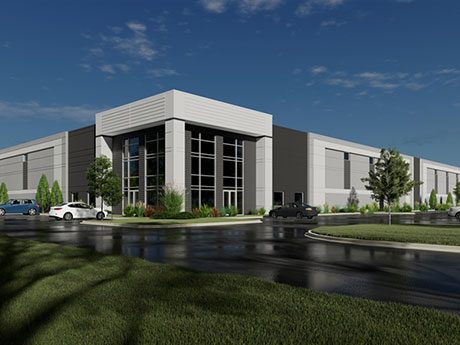By Mike Mangan, Cresa
We knew it would happen, it was just a matter of time: The industrial real estate market is currently experiencing a cooling trend in Chicago and across the country. The best-performing asset across all commercial asset classes for the past several years is finally coming back to earth due to higher borrowing costs and a slowdown in demand. Rental rates are beginning to level off and many economists are predicting a reduction in consumer spending.
The industrial sector had been able to flourish despite economic headwinds, with demand during the pandemic heavily focused on e-commerce activity. The supply versus demand is shifting, and this should be welcome news to tenants in the market or who will be in the market in the next 12 to 24 months. Indicators are not pointing toward a crash landing, but a return to earth for the golden child of the commercial real estate asset classes. Tenants and occupiers will be able to utilize the additional supply coming to market to secure better economics and concessions.

The facts
Let’s first take a look at the national landscape. The U.S. unemployment rate in August was 3.8 percent — higher than predicted by economists and slightly above the 3.5 percent rate recorded in July. Right now, everyone is waiting to see if the Fed will raise interest rates again. Consumer spending is down as Americans continue to feel their purchasing power being stifled by doggedly high inflation.
From a U.S. industrial real estate perspective, 2023 year-to-date absorption decreased significantly to 126.7 million square feet compared with 239 million square feet during the same period in 2022. However, 2023 absorption still outpaced the same time periods in 2019 (92.4 million square feet) and 2020 (107.8 million square feet).
Despite signs of softening market conditions, many landlords, particularly institutional owners, are holding firm on pricing (for now). Absorption is anticipated to remain positive through the end of the year, as there are still plenty of pre-leased assets to be delivered. Absorption is expected to cool dramatically, however, after those projects are completed.
As supply rises and demand (pre-development demand) dwindles, the airtight occupancies are loosening. The national vacancy rate rose to 4.1 percent, marking the highest level since mid-2021, mainly driven by an influx of new supply. Despite the slowdown in demand, the market delivered a record 146.9 million square feet of new supply in the second quarter of 2023. Buildings under construction slowed 3.4 percent from the previous quarter to 635.3 million square feet. Tenants and occupiers should find leverage with added supply on the market.
Chicago metro area
The Chicagoland industrial market mirrors the national market and continues to flourish despite the continued population loss in Chicago. The city’s central location and access to rail and highway systems make it one of the premier industrial markets in the United States. The past 12 months have seen approximately 26.7 million square feet of industrial space absorbed. This figure is almost double the average annual figure.
The vacancy rate in Chicago is sitting at 4.3 percent, with 30 million square feet of space currently under construction. Much of this inventory is being built on a speculative basis and about 70 percent of the industrial space currently under construction is not pre-leased. Looking ahead, tenants in the market will be able to leverage the additional supply to achieve better economics compared with the past three years.
Good news
While e-commerce activity is waning, manufacturing and automotive leasing are sectors that should grow with the demand for electric vehicles/batteries. Manufacturers seeking to reshore their operations and/or provide resiliency within their supply chains have added demand across the U.S., including Chicago.
New investments in manufacturing by both domestic and foreign companies went full speed ahead after the Inflation Reduction Act and the Bipartisan Infrastructure Bill were enacted. The Chips Act has spurned semiconductor production in the U.S. too.
Now what?
In Chicago, it appears as though we are in a period of disconnect where landlords are accustomed to record leasing activity and rental growth over the past three years, while the tenant/demand side senses a cooling off and is expecting a discount. Landlords and developers with speculative projects just delivered and currently under construction could be facing a new market. The pressure will be felt in six to 12 months if their buildings are still vacant with the weight of their carry costs.
A return to more “normal” year-over-year rental escalations and additional concessions such as free rent should be expected in new leases. Tenants and occupiers should be challenging the recently established “norms” of rapid year-over-year rental rate growth with little to no concessions from landlords.
The industrial real estate market has been a landlord’s market the past several years, but tenants/occupiers should be pressing and leveraging the cooling market to their advantage and not accept the status quo of the last three years.
If you are a decision maker and your warehouse/facility lease is expiring in the next 12 to 24 months, what should you do? Leverage the softening market to achieve market bottom pricing. As we emerge from perhaps the most dynamic industrial real estate market of all time, most indicators point to a shift in supply versus demand that should even the playing field for tenants of industrial real estate in Chicago and beyond.
Mike Mangan is a senior vice president with Cresa Chicago. This article originally appeared in the October 2023 issue of Heartland Real Estate Business magazine.


